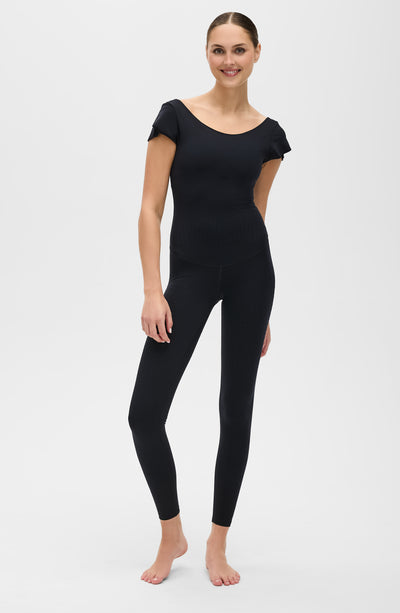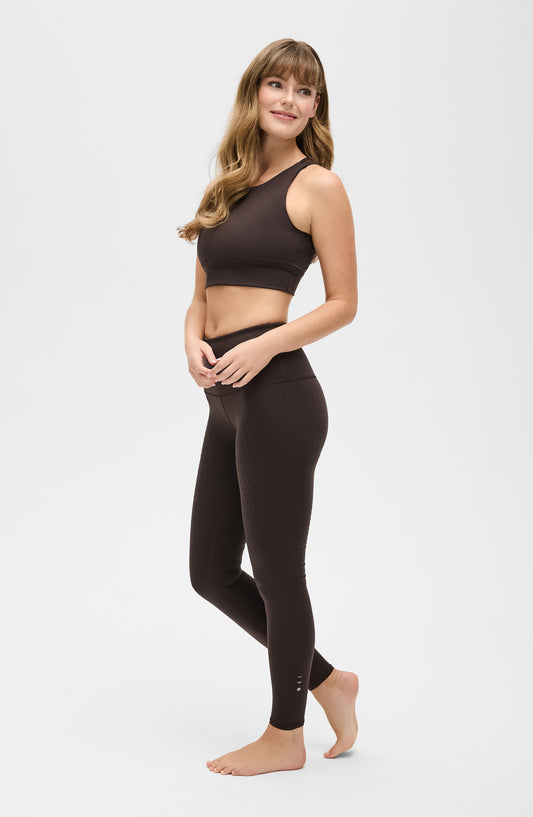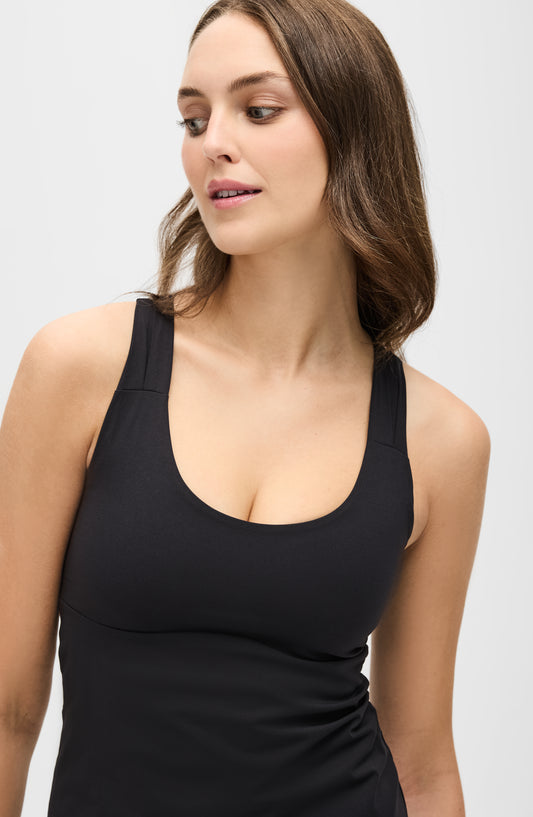⏱️ 7-Minute Read | Last Updated: October 2025
Table of Contents
What Is Lymphatic Drainage Massage for Stomach Bloating?
Lymphatic drainage massage for the stomach is a gentle manual technique that stimulates the vessels beneath your skin to reduce fluid retention and abdominal bloating. Unlike deep tissue massage, lymphatic drainage uses very light pressure to activate the body's natural drainage system.
Key benefits of abdominal lymphatic massage:
- Reduces water retention and bloating
- Improves digestive function
- Decreases inflammation
- Supports natural detoxification
This evidence-based technique is used by certified lymphatic therapists, physical therapists, and wellness practitioners to address chronic bloating, post-surgical swelling, and digestive discomfort.
Why Does Stomach Bloating Happen? Understanding Lymphatic Stagnation
Stomach bloating often results from lymphatic stagnation when the fluid between your cells moves too slowly through the drainage vessels in your abdomen.
Common Causes of Lymphatic Congestion:
- Prolonged sitting: Reduces muscle contractions needed to pump lymph fluid
- Dehydration: Your body needs water to move lymph effectively
- Low physical activity: Movement is the primary way lymph flows through your body
- Chronic stress: Stress hormones constrict lymphatic vessels
- High sodium diet: Salt causes your body to retain excess fluid
Unlike your cardiovascular system, with its heart pump, the lymphatic system depends entirely on:
- Muscle contractions
- Breathing patterns
- Manual stimulation (massage)
- External compression
When these mechanisms fail, lymphatic fluid accumulates in tissues, causing the sensation of bloating, heaviness, and abdominal distension.
How Lymphatic Drainage Massage Reduces Bloating: The Science
1. Activates Your Body's Natural Drainage Network
Your superficial lymphatic system sits just beneath your skin and collects excess fluid from tissues. In the abdomen, these vessels follow specific pathways:
- Upper abdomen → drains toward your armpits
- Lower abdomen → drains toward your groin
- Central abdomen → drains toward your body's main lymph reservoir near the diaphragm
Manual stimulation of these pathways increases how well your lymphatic vessels contract and pump, accelerating fluid clearance and reducing bloating.
2. Improves Digestion Through Gut Lymphatic Stimulation
Your gastrointestinal tract contains the largest concentration of lymph tissue in the body. This system includes hundreds of lymph nodes and immune cells throughout your intestines.
How lymphatic massage improves digestion:
- Helps food move through your system instead of sitting there
- Clears out waste that makes you feel sluggish
- Decreases that uncomfortable fullness after meals
- Tells your body to relax and focus on digestion
💡Clinical studies show that 10 minutes of abdominal lymphatic massage can speed up digestion and significantly reduce bloating symptoms.
3. Reduces Inflammation and Immune Response
Approximately 70% of your immune cells live in gut tissues. When lymphatic drainage slows, inflammatory waste builds up, causing:
- Your immune system to release more inflammatory chemicals
- Tissue swelling and puffiness
- Stronger reactions to certain foods
Lymphatic drainage massage physically removes this inflammatory buildup from tissues, reducing bloating caused by:
- Food sensitivities
- Inflammatory bowel conditions
- Post-meal immune responses
💡Research demonstrates that consistent lymphatic stimulation (5-10 minutes daily) can significantly decrease inflammation within 2-4 weeks.
4. Activates Your "Rest and Digest" Mode
Abdominal massage stimulates the vagus nerve—a major nerve that runs from your brain to your gut and controls:
- Digestive enzyme release
- How food moves through your intestines
- Inflammation regulation
- Stress response
This nerve activation shifts your body from "fight or flight" to "rest and digest" mode, which:
- Reduces stress-induced bloating
- Improves gut-brain communication
- Lowers stress hormones
- Helps lymphatic vessels relax and drain better
Combining lymphatic massage with deep breathing amplifies this effect, dramatically increasing how fast lymph moves through your central drainage system.
Step-by-Step Stomach Lymphatic Drainage Massage Technique
This protocol follows certified lymphatic therapist methodology for reducing abdominal bloating and supporting digestive function.
Before You Begin
Optimal timing: Evening, 1-2 hours after eating, or before bed
Do not perform if you have:
- Active abdominal infection or acute inflammation
- Known or suspected cancer
- Blood clots
- Heart failure
- First trimester of pregnancy
- Recent abdominal surgery (within 6 weeks)
Best practices:
- Perform on bare skin when possible (or over thin fabric)
- Use very light pressure—never press hard enough to cause discomfort
- Empty your bladder before beginning
- Lie flat or recline at a comfortable angle
The Complete Technique (10 Minutes)
Step 1: Deep Breathing Activation (2 minutes)
Place both hands on your abdomen below the ribcage.
Breathing pattern:
- Inhale through nose for 4 seconds (feel abdomen rise)
- Hold for 2 seconds
- Exhale through mouth for 6 seconds (feel abdomen fall)
- Repeat 8-10 times
Why this works: Deep breathing creates pressure changes in your chest and abdomen that activate your central lymphatic system, preparing it to receive fluid from other areas.
Step 2: Open Primary Drainage Pathways (2 minutes)
Use your fingertips to make small, gentle circles (pressure similar to spreading lotion) at these locations for 20-30 seconds each:
- Above your collarbones (on either side of your neck base)
- Behind your ears (along your jawline)
- Your armpits
- Your groin area (the crease where your leg meets your pelvis)
Why this works: This "opens" your main drainage sites before moving fluid, creating a pull that draws lymph from congested areas toward these exit points.
Step 3: Upper Abdomen Drainage (2 minutes)
Divide your abdomen into 4 sections using your belly button as the center point.
Upper right section:
- Place flat hand just below right ribcage
- Using gentle pressure, stroke upward and outward toward right armpit
- Perform 10-15 strokes
Upper left section:
- Place flat hand just below left ribcage
- Stroke upward and outward toward left armpit
- Perform 10-15 strokes
Technique note: Move your skin, don't slide over it. Imagine gently pushing water through a sponge.
Step 4: Lower Abdomen Drainage (2 minutes)
Lower right section:
- Place flat hand on right lower abdomen
- Stroke downward and outward toward right groin
- Perform 10-15 strokes
Lower left section:
- Place flat hand on left lower abdomen
- Stroke downward and outward toward left groin
- Perform 10-15 strokes
Direction matters: Always move fluid toward the nearest drainage point (armpits or groin).
Step 5: Circular Integration (1 minute)
Place both hands on your abdomen. Make large, slow clockwise circles (following the path of your colon):
- Start at lower right
- Move up right side
- Across upper abdomen
- Down left side
- Complete 8-10 full circles
Why clockwise: This follows the natural direction your intestines move food and waste.
Step 6: Final Breathing Sequence (1 minute)
Rest hands gently on abdomen. Return to deep breathing:
- 5-8 slow, deep breaths
- Focus on your abdomen expanding and relaxing
Purpose: This completes the lymphatic drainage process and activates your nervous system's natural "rest and digest" mode for optimal digestive function.
Expected Results
Immediate (within 15-30 minutes):
- Reduced sensation of fullness or tightness
- Less visible belly distension
- Softer, less rigid abdominal tissue
Short-term (within 1-2 hours):
- Urge to have a bowel movement
- Decreased water retention
- Lighter feeling in your midsection
Long-term (with daily practice for 2-4 weeks):
- Significantly less frequent chronic bloating
- More regular digestion
- Better body awareness and stress management
When to Use Compression for Lymphatic Support: The Role of MicroPerle® Technology
Manual lymphatic drainage provides immediate relief, but maintaining lymphatic flow throughout the day requires continuous support. This is where compression technology becomes essential.
How Compression Garments Support Lymphatic Function
Medical-grade compression creates external pressure that:
- Reduces blood pooling in your veins
- Decreases how much fluid leaks into tissues
- Keeps lymphatic vessels toned during inactivity
- Provides continuous gentle stimulation to vessels beneath your skin
MicroPerle® Technology: Continuous Lymphatic Activation
Unlike standard compression, MicroPerle® incorporates microscopic beads in a specific pattern along abdominal lymphatic pathways. This creates:
Mechanical stimulation:
- Each movement generates a micro-massage effect on your skin surface
- Activates sensors in your skin that trigger lymphatic vessel contractions
- Maintains 24-hour lymphatic stimulation without conscious effort
Graduated compression (13 to 8 mmHg):
- Higher pressure at your legs, lower at your torso
- Creates a pressure gradient that helps lymph move toward central drainage
- Prevents fluid from pooling in lower areas
Clinical applications:
- Significantly reduces daily bloating episodes
- Maintains results from manual lymphatic drainage
- Provides passive support for those unable to perform daily massage
Best Products for Abdominal Lymphatic Support
For targeted abdominal drainage:

Adorn Bodysuit
Scalloped design with core lymphatic support

Le Cha-Cha Jumpsuit
Full torso compression with lymphatic technology
Ideal use cases:
- Travel (prevents fluid retention during long flights)
- Desk work (maintains lymphatic flow during prolonged sitting)
- Post-meal (supports digestive lymphatic function)
- Recovery (aids healing after surgery or injury, with medical clearance)
Evidence-Based Daily Protocol for Reducing Bloating
Combine manual techniques with lifestyle modifications for optimal results:
Morning Routine (5 minutes)
- Drink 500-750ml room temperature water with lemon
- 5 minutes of gentle movement (walking, stretching, yoga)
- Hydration supports your lymphatic system's ability to move fluid
Midday Support (throughout day)
- Wear graduated compression with lymphatic technology
- Take 2-3 minute movement breaks every 60-90 minutes
- Avoid tight, restrictive clothing around your abdomen
Evening Protocol (10-15 minutes)
- Perform complete abdominal lymphatic drainage sequence
- Pair with slow, deep breathing
- Avoid eating 2 hours before bed
Weekly Enhancement
- 30-45 minutes of moderate cardiovascular exercise (3-4 times weekly)
- Dry brushing before shower (3-4 times weekly)
- Epsom salt bath with abdominal massage (1-2 times weekly)
Frequently Asked Questions About Lymphatic Drainage for Bloating
How long does it take for lymphatic drainage massage to reduce bloating?
Most people experience a noticeable reduction in bloating within 15-30 minutes of completing an abdominal lymphatic drainage sequence. Maximum effect occurs 1-2 hours after a massage as the mobilized fluid processes through your lymphatic system. For chronic bloating, consistent daily practice for 2-4 weeks produces sustained results.
Can I do lymphatic drainage massage on myself?
Yes. Self-administered lymphatic drainage massage is highly effective for reducing abdominal bloating. The key is using proper technique: very light pressure (never painful), slow movements following lymphatic pathways, and always beginning by opening your main drainage points first. Studies show self-massage produces comparable results to professional manual lymphatic drainage when performed correctly and consistently.
What is the best time of day to do lymphatic drainage massage for bloating?
Evening is optimal, ideally 1-2 hours after your last meal. This timing allows:
- Food to move through initial digestion
- Works with your body's natural decrease in stress hormones
- Activates your "rest and digest" mode before sleep
- Supports overnight tissue repair and detoxification
Morning lymphatic massage can also be beneficial for reducing overnight fluid accumulation, particularly around your face and abdomen.
How is lymphatic drainage different from regular massage?
Lymphatic drainage uses extremely light pressure and targets vessels just beneath your skin. Regular massage uses deeper pressure and targets muscles and connective tissues. Lymphatic drainage focuses on moving fluid through vessels, while deep tissue massage addresses muscle tension and knots. For bloating, lymphatic drainage is more effective because it directly addresses fluid retention rather than muscle tightness.
Does drinking water help lymphatic drainage?
Yes. Adequate hydration is essential for lymphatic function. When you're dehydrated, your body can't move lymph fluid efficiently. Optimal intake is approximately 2-3 liters daily for most adults. Adding electrolytes or a pinch of sea salt helps maintain the right fluid balance in your cells for better drainage.
Can compression wear replace manual lymphatic drainage?
Compression wear provides continuous passive support and maintains lymphatic flow throughout the day, but it doesn't replace the specific directional clearing that manual drainage provides. Optimal results come from combining both: manual drainage (5-10 minutes daily) for targeted clearing plus graduated compression with lymphatic technology (throughout the day) for maintenance.
What foods reduce bloating and support lymphatic health?
Anti-inflammatory foods that support lymphatic function:
- Leafy greens (supports detoxification)
- Berries (reduces inflammation)
- Fatty fish (decreases inflammatory chemicals)
- Ginger and turmeric (natural anti-inflammatory compounds)
- Fermented foods (supports gut-lymphatic connection)
Foods to limit:
- High sodium processed foods (increase fluid retention)
- Simple sugars (trigger inflammation)
- Alcohol (impairs lymphatic vessel function)
- Carbonated beverages (create gas and distension)
Is lymphatic drainage massage safe during pregnancy?
Abdominal lymphatic drainage requires medical clearance during pregnancy. While gentle lymphatic massage of the legs and arms is generally safe after the first trimester, direct abdominal work should only be performed by a certified prenatal massage therapist or lymphatic specialist. The technique must be modified to avoid pressure on the uterus.
How do I know if my bloating is lymphatic or digestive?
Lymphatic bloating characteristics:
- Worse after prolonged sitting or standing
- Improves significantly with movement
- Accompanied by general puffiness (hands, feet, face)
- Soft, doughy tissue texture
- Responds quickly to lymphatic drainage massage (within 15-30 minutes)
Digestive bloating characteristics:
- Happens after eating certain foods
- Accompanied by gas, cramping, or bowel changes
- Firm, distended abdomen
- Responds to dietary changes
- Takes hours to days to resolve
Many cases involve both systems. If bloating persists despite lymphatic drainage and dietary changes, consult a gastroenterologist or registered dietitian.
Can lymphatic drainage help with weight loss?
Lymphatic drainage does not directly cause fat loss, but it can:
- Reduce water weight through fluid clearance
- Decrease inflammation that slows metabolism
- Improve nutrient absorption and waste removal
- Support more effective exercise recovery
Any reduction in waist measurements results from decreased fluid retention, not fat reduction. For sustainable weight loss, combine lymphatic support with healthy eating, resistance training, and cardiovascular exercise.
Summary: Evidence-Based Approach to Reducing Bloating
Abdominal lymphatic drainage massage is a scientifically validated technique for managing fluid retention, improving digestive function, and reducing bloating. The process works through:
- Mechanical stimulation of lymphatic vessels beneath your skin
- Directional fluid movement toward your body's main drainage sites
- Activation of your gut-lymphatic connection for improved digestion
- Nerve stimulation that supports your "rest and digest" mode
For optimal results:
- Perform 10-minute manual drainage sequence daily (evening preferred)
- Combine with slow, deep breathing
- Stay well hydrated (approximately 2-3 liters daily)
- Wear graduated compression with lymphatic technology during the day
- Include 30-45 minutes of moderate exercise 3-4 times weekly
Expected outcomes with consistent practice:
- Significantly less frequent bloating within 2-4 weeks
- Improved digestive regularity and comfort
- Reduced inflammation
- Better stress management and body awareness
Elastique bodysuits featuring MicroPerle® technology provide continuous abdominal lymphatic stimulation positioned along primary drainage pathways. This passive intervention maintains lymphatic vessel function and supports efficient fluid clearance during normal daily activities.
Recommended Reading
Medical Disclaimer: This information is for educational purposes and does not replace professional medical advice. Consult a healthcare provider before beginning any new health protocol, especially if you have existing medical conditions, take medications, or have undergone lymph node removal or radiation therapy.




